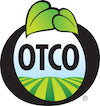Just How Much Genetically Modified Food Are You Eating Every Day?
You've likely heard about genetically modified foods. They're the stuff of science fiction—laboratory altered plant cells injected with foreign compounds not naturally occurring to allegedly make the plants better at resisting pests (and pesticides); they're designed to grow hardier and faster crops so that we can feed the world, according to the companies behind the science like Monsanto, Cargill and Dow. Actually, it sounds kind of nice—if it were true. But the science is flawed with controversy from the adverse affects on soil, plants, and ecosystems and inability to improve crop yields, to a number of studies linking GMOs to serious human health risks.
The California Department of Health and Agriculture reports that nearly 80 percent of all processed food in the U.S. contain some sort of ingredient derived from GMOs. Most of the corn, soy and canola grown in the U.S. is now genetically modified, and unless you're buying organic meat, dairy and egg products, you're eating the genetically modified grains fed to those animals, too.
With no label laws currently in effect anywhere in the U.S., the only way to know that your food is GMO free is by purchasing organic. The term 'natural' is used often on products that appear to be healthy, but a recent report from the Cornucopia Institute found that several major cereal brands marketing their offerings as "natural" actually contained genetically modified ingredients. While technically legal, the World Health Organization defines genetically modified foods as undergoing alterations that would not occur naturally.
We were delighted to see Nature's Path—the leading organic cereal brand—release this stunning infographic that shows just how genetically modified foods affect the U.S. food supply. Chances are, you're eating them. Every day. The recent rise in food allergies and sensitivities, asthma and other health problems have many people concerned that the source of these issues are directly correlated with the rise in genetically modified crops over the last ten years. Ninety three percent of soy and cotton grown in the U.S. is now GMO, 90 percent of canola and 86 percent of corn is also genetically modified.
Would you eat GMOs if you had the choice? Many Americans polled say they would prefer to have the choice—and the way to choose comes from a label that lets the shopper know their food is genetically modified. It has become such a contentious issue that from October 1st-16th, hundreds of concerned citizens, corporations and advocacy groups walked from New York City to Washington D.C. to bring awareness to the issue. With stops along the way, the Right2Know March held rallies at natural health food stores, toured organic farms and convened in Washington on World Food Day, demanding that the FDA begin a program that would require labeling of all genetically modified foods. You can join that petition at the JustLabelIt.org website. And if you live in California, help make it the first state to require labeling of all genetically modified foods by collecting signatures needed to get the issue on the 2012 ballot. Visit the LabelGMOs.org website for more info.
Image: Millions Against Monsanto
http://www.flickr.com/photos/65421715@N02/6151143762/sizes/s/in/photostream/
Leave a comment
Comments will be approved before showing up.



